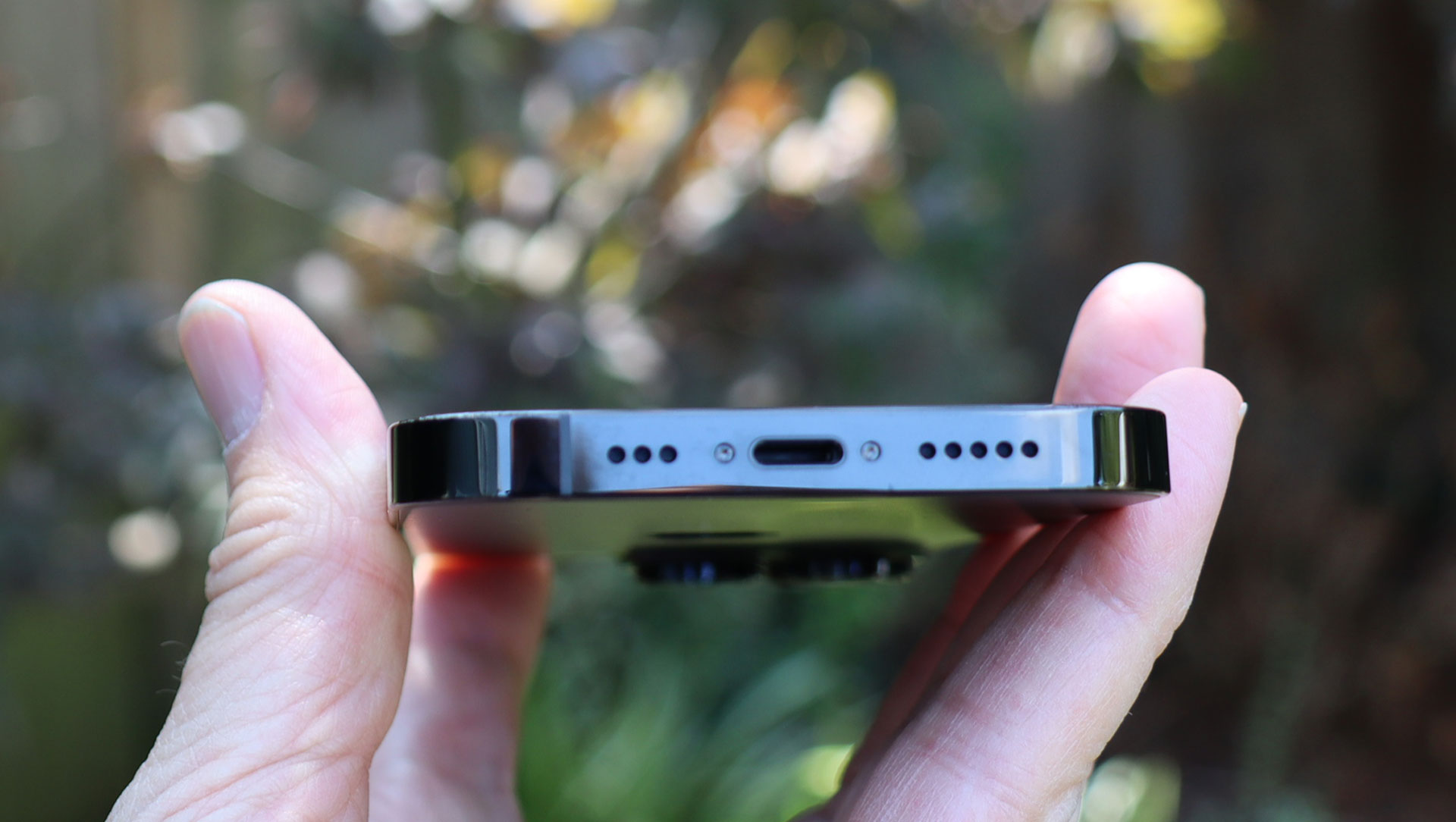iPhone 15 Pro could get the fastest connection possible
The iPhone 15 Ultra could be struck by a thunderbolt

A new leak suggests that the Apple iPhone 15 family, from the base model through the rumored iPhone 15 Ultra device, would all use USB-C in lieu of Apple’s lightning connector - with one crucial difference between the high- and low-end models.
USB-C ports coming to the iPhone has been a long-rumored and anticipated change, one that may be mandated by European Union laws taking effect in the near future, by 2024.
But the additional upgrade would see the iPhone 15 Pro and iPhone 15 Ultra using a full Thunderbolt 4 port, which has a much higher bandwidth for faster data transfer and intense graphical output.
The leak comes from a subscription-based newsletter hosted by Twitter leaker LeaksApplePro, a source with a relatively decent track record of tips on forthcoming phones.
The leaker rightly suggests that recording high-resolution video, even using Apple’s efficient ProRES format, creates files that are prohibitively large to transfer over an aging connection like Lightning. A 15-minute, 4K-resolution video file would take around 40 minutes to transfer from your iPhone to your laptop.
Apple has not significantly upgraded Lightning since it was introduced, and now that the phones require more bandwidth for the massive video files they create, it makes sense for Apple to use something better - especially as the same method is used on the iPad Pro and Air models.
A wider split
In addition to the new data connection, the leak also says that Apple will continue this year’s pattern of using the newest Bionic chips only on the Pro-level iPhone and better.
Sign up for breaking news, reviews, opinion, top tech deals, and more.
The iPhone 15 Pro and iPhone 15 Ultra are rumored to get the A17 Bionic chipset, with it being suggested that Apple feels secure in its position as a leader in chip performance, and will focus instead on power efficiency.
It is hoped that the new chips will be up to 20% more power efficient than the current A16 Bionic.
Finally, all of the new iPhones are expected to get the Dynamic Island hole-punch feature and this would seem like a necessary step if Apple hopes for the Dynamic Island to survive as an interface concept.
If only the top-half of iPhone buyers, in terms of wallet size, can use the Dynamic Island, then it is essentially an island unto itself, and fewer third-party developers will support it.
There is no word on whether the less-expensive iPhones will get the LTPO features that endow the iPhone 14 Pro with an always-on display. Other recent rumors have also suggested every iPhone will get a Dynamic Island, but Apple won’t be able to source enough panels with the LTPO capability to bring always-on display features to every iPhone 15 model.
Analysis: USB-C is much more exciting than it seems
We’ve been anticipating Apple’s adoption of USB-C on the iPhone for some time, especially since the European Union ruled against the company’s proprietary port.
Of course we like a universal standard, but opening up the iPhone to USB-C will also kickstart the accessory market once again, and this time in a much more robust way.
There are already plenty of proven USB-C accessories on the market because every other major smartphone and tablet maker, and even Apple’s own iPad Pro tablet, uses USB-C.
When Apple puts USB-C on an iPhone, it won’t be reinventing the wheel from an old 30-pin connection to a new tiny port, like the switch from the original iPod connector to Apple Lightning.
This will be Apple finally allowing it’s devices to join a mature community, with an amazing potential for what USB-C, and especially Thunderbolt, can enable.

Starting more than 20 years ago at eTown.com. Philip Berne has written for Engadget, The Verge, PC Mag, Digital Trends, Slashgear, TechRadar, AndroidCentral, and was Editor-in-Chief of the sadly-defunct infoSync. Phil holds an entirely useful M.A. in Cultural Theory from Carnegie Mellon University. He sang in numerous college a cappella groups.
Phil did a stint at Samsung Mobile, leading reviews for the PR team and writing crisis communications until he left in 2017. He worked at an Apple Store near Boston, MA, at the height of iPod popularity. Phil is certified in Google AI Essentials. His passion is the democratizing power of mobile technology. Before AI came along he was totally sure the next big thing would be something we wear on our faces.